-
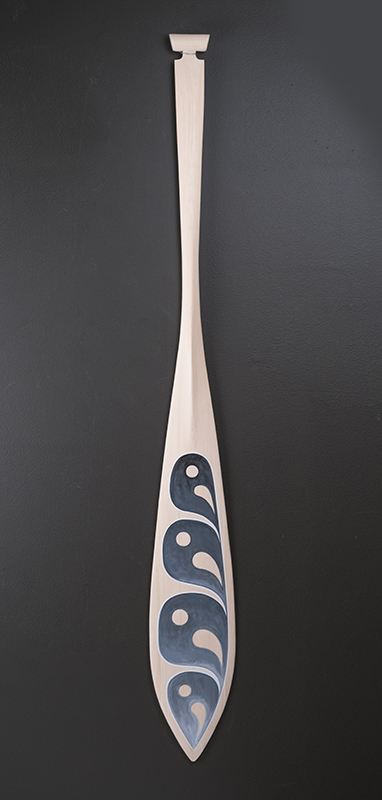 Fish Feather Drip Splash Wave Crash…Port Orford Cedar Painted Paddle
Fish Feather Drip Splash Wave Crash…Port Orford Cedar Painted Paddle- 59"h
- 1"w
- 7.5"d
SOLD -
 Adorned Interpretive Urban Transportation Implement – Rainy City – SkateboardSkateboard, Acrylic
Adorned Interpretive Urban Transportation Implement – Rainy City – SkateboardSkateboard, Acrylic- 32"h
- 8.5"w
- 1.75"d
SOLD -
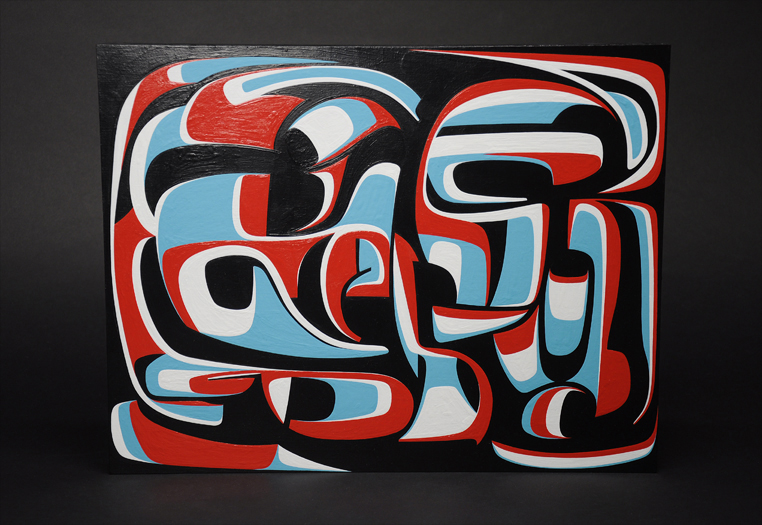 Entheogen: The Spirits You Don’t Believe In Are Here, And They’d Love To Speak To YouAcrylic on Board
Entheogen: The Spirits You Don’t Believe In Are Here, And They’d Love To Speak To YouAcrylic on Board- 14"h
- 18"w
- 1.63"d
SOLD -
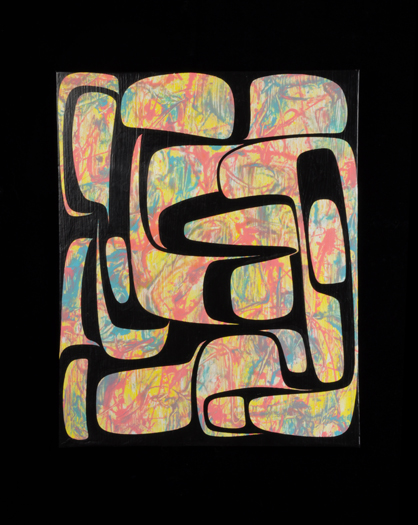 Shadows Around the FireAcrylic on Board
Shadows Around the FireAcrylic on Board- 18"h
- 14"w
SOLD -
 For the Safe Return Home of Our Noble WarriorsElk Hide, Wood, Sinew
For the Safe Return Home of Our Noble WarriorsElk Hide, Wood, Sinew
Sold with Drumstick- 20"h
- 20"w
- 3"d
SOLD -
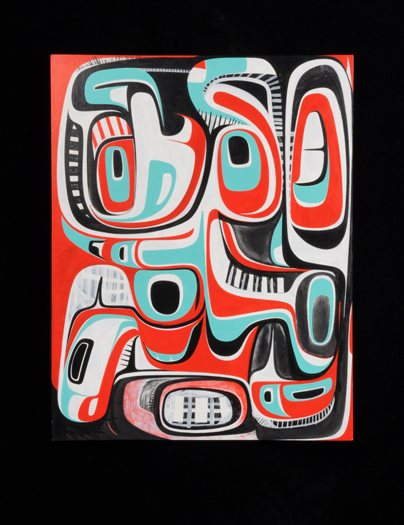 Where Noise Becomes SoundAcrylic on Canvas
Where Noise Becomes SoundAcrylic on Canvas- 19.75"h
- 16"w
SOLD -
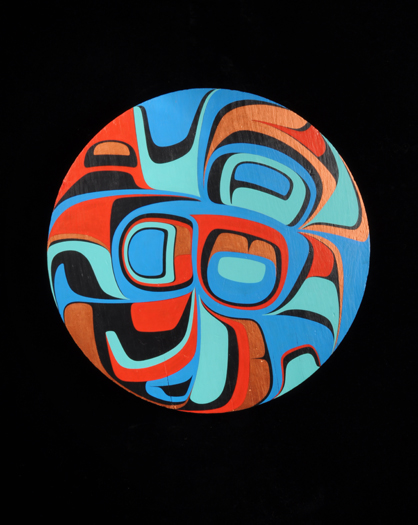 Water UnderneathAcrylic on Reclaimed Wood
Water UnderneathAcrylic on Reclaimed Wood- 15.75"h
- 15.75"w
- 1"d
SOLD -
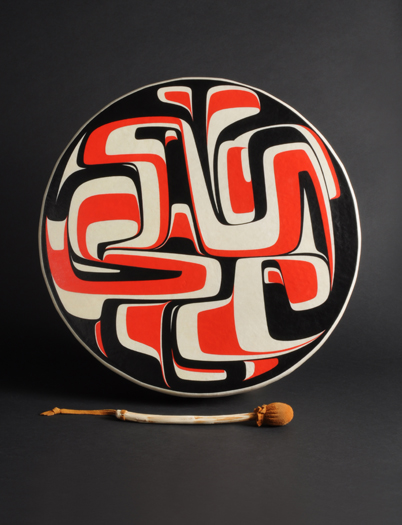 Battle of Seattle – 1856Elk Hide, Acrylic
Battle of Seattle – 1856Elk Hide, Acrylic- 25.13"h
- 25.5"w
- 3.5"d
SOLD -
 Return of the Salmon DrumElk Hide, Acrylic
Return of the Salmon DrumElk Hide, Acrylic- 9.75"h
- 9.75"w
- 2.5"d
SOLD -
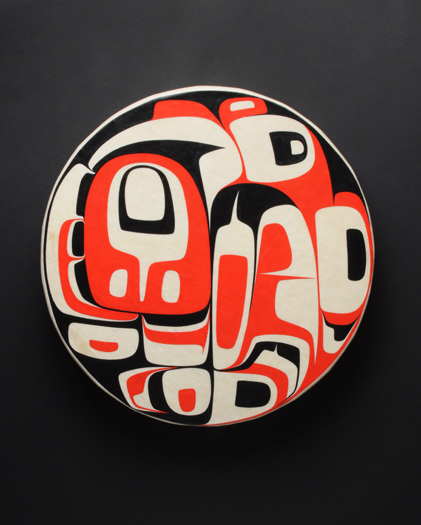 Elk’s Heart Beats in the City DrumElk Hide, Acrylic
Elk’s Heart Beats in the City DrumElk Hide, Acrylic- 20"h
- 20"w
- 3"d
SOLD -
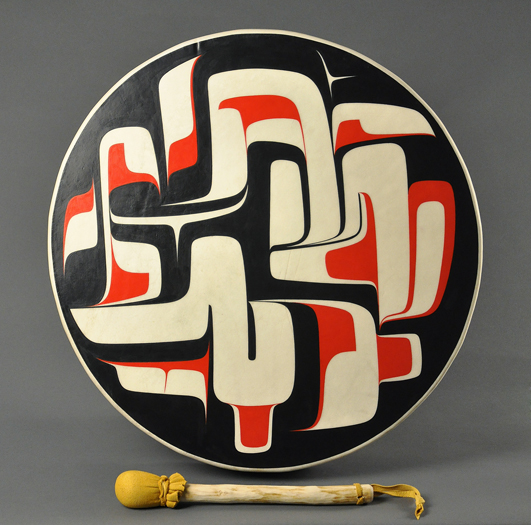 For the Songkeepers Who Maintain the Pulse of our PeopleHide, Acrylic
For the Songkeepers Who Maintain the Pulse of our PeopleHide, Acrylic- 22"h
- 22"w
- 4"d
SOLD
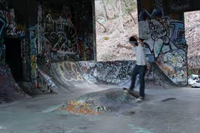
Sheldon Skillie was born in Mountainview, CA in 1973. His father is Kaigani Haida, from Hydaburg, Alaska and his mother was Ogallala Lakota, from the Pine Ridge Reservation in South Dakota.
Growing up in Seattle, WA, Skillie was interested in all forms of art as far back as he can remember, including break dancing, old school rap, classic rock, heavy metal music and graffiti. He was also exposed to native art and culture, and was haunted by a visit to Bill Reid’s “Raven And The First Men”, one of his earliest memories. He later learned that he was related to Reid. At the age of ten, the artist moved to Ketchikan, AK, to the home of his Nana and Chinna, both Haida people who spoke the Haida language fluently. The walls of their home were adorned with a collection of Native artwork. Skillie’s Nana was Charles Edenshaw’s daughter. It was in her home that much of the artist’s knowledge of Haida art and culture began.
Skillie attended Portland State University in 1995 for Fine Arts, but soon dropped out to pursue a Masters Degree in odd jobs – from oil refinery labor in California to horizontal jackhammering in Alaska, signmaking, cooking, pumping gas, house painting, house cleaning, various construction labor jobs, fish processing and so on. He continued to educate himself and develop his personal style as an artist during this time, in mediums such as oil pastel, colored pencil, pen and ink, and acrylic paint.
In 2002, Norman Jackson (Tlingit), asked Skillie to participate in an apprenticeship at his studio gallery in Ketchikan, AK. He learned about formline design, having been tasked with painting Jackson’s predrawn designs directly onto his masks. He also learned about carving masks from alder, birch, and cedar. In 2003, Sheldon was asked by Donald Varnell (Haida) to apprentice on a 22 foot totem pole to be placed at the Ketchikan Indian Community Health Clinic. Though shortlived, this apprenticeship would clarify his understanding of the refinements of Haida Art. These invaluable experiences with two master artists of the northwest coast laid the foundation for Skillie’s ultramodern Haida design style.
“What I’m contributing [to Haida art] is my tribute to its legacy of complex, evolved design theory, monumental expression of motif, dynamic compositional tradition, and vivid use of color and form. I want to paint the look of the sound of urban rhythm, to explore the modern relation of urban Native experience to ancient indigenous lineage.” -Sheldon Skillie


